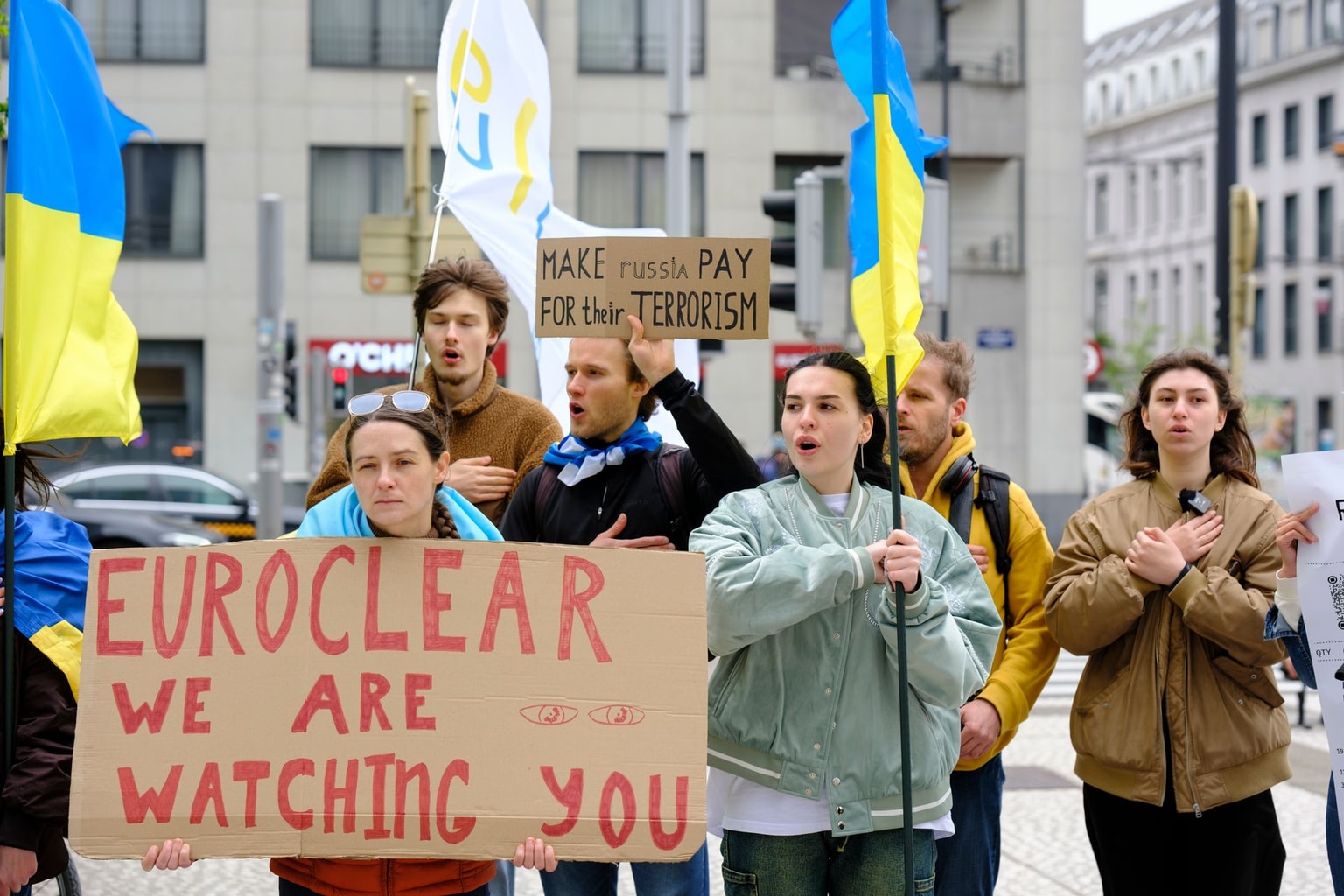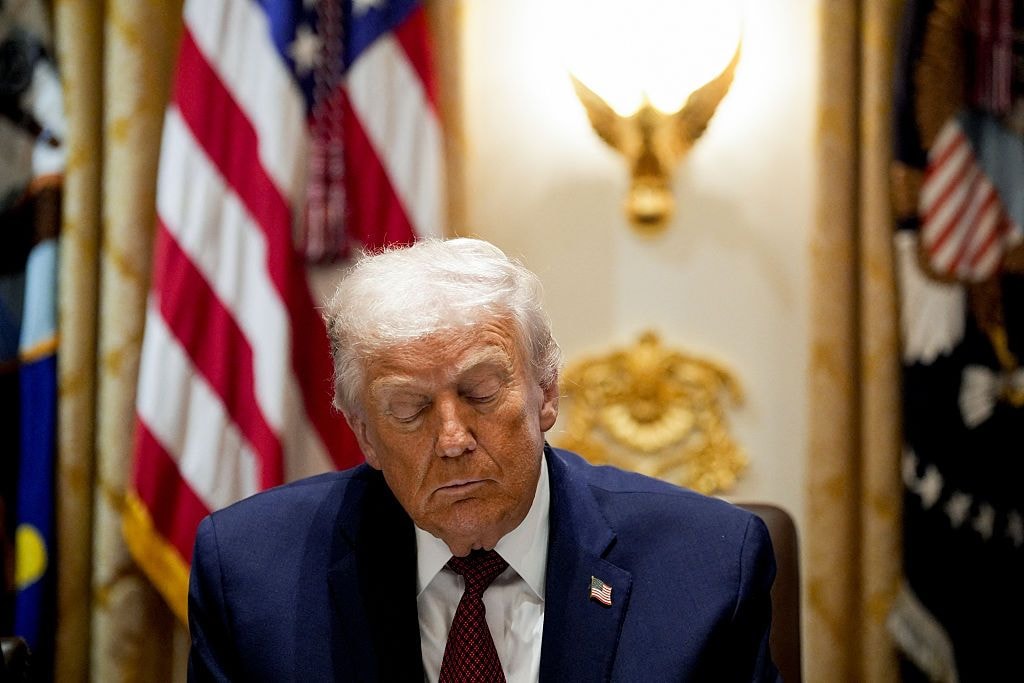
Ahead of Trump’s inauguration, Ukraine’s European partners can’t afford to watch and wait for Washington’s next move
Discussions and reports about readiness for potential “boots on the ground” scenarios ongoing, but in a sea of uncertainty, European players are reluctant to make brave moves alone.
Bundeswehr soldiers participate in the final NATO exercise "Quadriga 2024" in Pabrade, Lithuania, on May 29, 2024. The exercise demonstrates capabilities required to defend NATO's eastern flank and serves as Germany's contribution to the large-scale NATO maneuver "Steadfast Defender." (Kay Nietfeld / picture alliance via Getty Images)
Just days out from the return of Donald Trump to the White House, the future of Russia’s war against Ukraine is dominated by a great unknown: whether the incoming president will manage to push Moscow to stop its advance on the battlefield, or whether he will disengage and perhaps abandon U.S. support for Ukraine entirely.
Either way, one thing is clear: the war cannot come to an end with a secure Ukraine without Europe playing a braver role.
The chance of the guns and drones going silent across Ukraine in 24 hours after Trump takes office — as Trump had frequently promised on the campaign trail — is slim to none.
Nonetheless, amid consistent rhetoric from Washington that Europe must up defense spending and take more responsibility for their continent’s security, European countries are faced with an urgent task: taking the braver steps to secure Ukraine against a bullish Moscow seemingly more convinced in its forthcoming victory than at any time since February 2022.
In a new reality far removed from the war of 2022, the catch phrase going into 2025 is now “boots on the ground.”
The first serious floating of the idea of European troops entering Ukrainian territory came from French President Emmanuel Macron in the spring of 2024.
“In fact, many countries said that in the weeks that followed that they understood our approach, that they agreed with our position and that this position was a good thing.”
Media coverage of hypothetical European “boots on the ground” is often presented in the context of a peacekeeping force entering Ukrainian territory after a hypothetical peace deal.
While clear that larger players like France, Poland, or the U.K. would need to be involved, and that it is hard to imagine a new level of European action without the backing of the incoming U.S. administration, the role of smaller countries in the Nordic and Baltic states also looks to be critical.
Consistently among the top providers of military aid to Kyiv as a percentage of GDP, countries like Denmark, Sweden, Finland, Lithuania, Latvia, and Estonia have also been the most outspoken in their support for Ukrainian victory, beyond the tired repetitions of “as long as it takes.”
Recent alleged Russian sabotage attacks in the Baltic Sea, including the damaging of undersea cables running between Nordic and Baltic states, have served as a reminder that Russia’s war is not limited to Ukrainian territory.
The Kyiv Independent spoke to top officials, experts, and other stakeholders in some of Ukraine’s top European partners to take the pulse of countries that could be part of a new “coalition of the willing” in their support of Ukraine in 2025.
Voices of clarity
Before facing up to Trump, let alone Putin, the first major hurdle European countries must overcome is their own mindset, according to Jukka Kopra, chair of the Finnish parliament’s defense committee.
“Finland has always taken defense seriously. So we have a conscription system. We have a large reserve-based army,” Kopra said to the Kyiv Independent in Helsinki.
“Nobody's ever ready for war, but we have things in order. We take it seriously, unlike some other countries who only have things working on paper.”
Although relatively small in terms of hard geopolitical sway, since the launch of Russia’s full-scale invasion, the countries immediately bordering Russia have often found themselves in the role of activist, pushing Ukraine’s crystal-clear message that peace must come through strength in the NATO arena.
“One might think that when the escalated aggression started in February 2022, everybody's eyes would open,” said Kopra. “They are opening slowly, but not everywhere.”
Of all NATO member states, none show more clarity than the Baltic States, where the memory of Soviet occupation and the totalitarian repression that came with it remains fresh.
Only recently stepping down after his country’s last elections, former Lithuanian Foreign Minister Gabrielius Landsbergis has been one the most eloquent pro-Ukrainian voices among foreign officials.

“Appeasement is a recurring virus; the seasons vary in how often it does reoccur in Europe, but it always comes back,” said Landsbergis to the Kyiv Independent.
"Appeasement is a recurring virus; the seasons vary in how often it does reoccur in Europe, but it always comes back."
“The logic is always the same. I am the person who can appease, who can offer part of some other country to a dictator and all of us will be fine. It's so iconic when you see Chamberlain resurrected in 2024 in Europe and picking up the phone and saying, ‘I have this.’”
Landsbergis wasn’t the only Baltic minister to mention the infamous British prime minister, who had signed the Munich Agreement with Nazi Germany less than a year before Adolf Hitler invaded Poland.
“If it is a Chamberlain peace, it will be the start of more and more aggression,” said Estonian Foreign Minister Margus Tsakhna to the Kyiv Independent in Tallinn. “Now, we have every opportunity to avoid everything that came after 1938: World War II. This is not only about Europe, it is about the world order.”
A coalition of the willing?
As clear as the rhetoric of the Nordics and Baltics has been, taking braver steps still requires the leadership of countries with more weight to throw around.
“These conversations have matured,” said French security expert Leonie Allard to the Kyiv Independent. “But you need much more political weight from other Europeans, which we haven't seen so much.”
Germany, traditionally cautious but still the second-largest provider of military aid to Ukraine, looks to be completely absorbed by upcoming federal elections in February, while France’s government collapsed in December.
These countries that have traditionally been the leaders of Europe, they are kind of incapable at the moment,” said Kopra, “and what a coincidence it is, what a good position for the Kremlin.”
Still, the clear choice to take the lead is Paris, said Allard, who co-authored a recent paper published by the Atlantic Council entitled “Europe needs a coalition of the resolute.”
Macron brings with him to the table personal experience dealing with both Putin and Trump, which could be crucial in coordinating a braver European bloc.
“France cannot do anything on its own, nothing at all,” said Allard, “it's also up to other Europeans to, you know, take this opportunity to put forward their own ideas on what they want to do.”
“France cannot do anything on its own, nothing at all.”
The other obvious candidate to strengthen such a coalition would be Poland, the nation with the most to lose in national security from an abandonment of neighboring Ukraine.

Polish Prime Minister Donald Tusk has denied reports claiming he discussed deploying troops to Ukraine with Macron, as Warsaw sticks closely to a doctrine of beefing up its military to defend NATO borders.
Still, the possibility of Poland changing its tune shouldn’t be ruled out, said Allard.
“What other war is NATO preparing for apart from one with Russia?” she said. “There's only one thing, and if that thing means being in Ukraine, then it should be being in Ukraine. There is no other scenario.”
“Whatever the solution is to the present situation in the war between Ukraine and Russia,” said Kopra, “in any case, we are back in the Cold War, and all of Europe should start accelerating accordingly.”
Boots on the ground
Since the launch of Russia’s full-scale invasion, Kyiv has stressed that Ukraine doesn’t need foreign militaries to join the fight: the West only needs to provide the weaponry and ammunition, and Ukraine will do the job.
When it comes to direct combat with Russian forces, this position hasn’t changed, but with a dangerous and unpredictable outlook for the war in 2025, other versions of “boots on the ground” are being explored to improve Ukraine’s position.
A starting point often discussed is training. If conducted far from the front line, moving the existing overseas training programs into Ukrainian territory would not only make them more efficient, but send a strong signal to Moscow that the West will not just retreat to NATO’s eastern flank.
Speaking to the Kyiv Independent in Stockholm, Swedish Defense Minister Pal Jonson pointed out that representatives of his country’s defense procurement agency were already on the ground in Ukraine, and that Sweden wouldn’t rule out training Ukrainian troops on Ukrainian territory.

“We think it's good if we can find unity on this, there are ongoing discussions in several different places in Europe,” he said.
According to Landsbergis, a move for European countries to begin training Ukrainian soldiers inside Ukraine could be the first step in a series of careful moves that will slowly but surely up the deterrence factor for Moscow.
“If they're trained in Ukraine, imagine that where troops are trained, the areas are defended with additional air defense support. You bring Lithuanian and French troops, the French bring in the air defense, and we start covering parts of Ukrainian territory.”
Nonetheless, for now, the majority of attention has been on the use of European troops as a physical security guarantee, as expressed by Zelensky after his calls with Macron.
After a tough two years of attritional warfare which saw a failed Ukrainian counteroffensive in 2023 and a steadily worsening manpower crisis, the fading perspective of a complete Ukrainian victory has turned attention to the need for peace to come with hard guarantees against a repeat Russian invasion.

Trump and his team, many of whom publicly subscribe to the myth that “NATO expansion” was one of the main causes of Russia’s war against Ukraine, have spoken strongly against inviting Kyiv to the alliance, an offer that sat at the top of Zelensky’s victory plan as presented to partners in October.
Whatever alternatives could be conceived, from a peacekeeping force to a more serious military presence, there is no substitute for bringing Ukraine under the protection of Article 5 of the NATO treaty, said Tsahkna.
“Our point is very clear,” he said, “NATO membership for Ukraine is the most secure, most clear, most efficient, and cheapest way to give real security guarantees. Any other structure is much more complicated.”
"Our point is very clear: NATO membership for Ukraine is the most secure, most clear, most efficient, and cheapest way to give real security guarantees."
“There are four countries that gave security guarantees for Ukraine (in the 1994 Budapest Memorandum). One of them attacked Ukraine ― Russia ― and the three others are not fulfilling that agreement.”
But if the only solid alternative ends up being boots on the ground, it will be a major leap for escalation-shy Europe, said Latvian Foreign Minister Baiba Braze to the Kyiv Independent in Riga.
“Currently, NATO is not ready to enter the war,” she said, “because the clear concept is that Ukraine's self-defense is supported, everybody provides what is necessary, but nobody wants to be part of the war, fighting the war.”
Though not as physically threatened by Russia as the Nordics or Baltics, France’s leading role in a future troop deployment makes a lot of sense due to the organization of its military and recent experience, said Allard.
“France is the country that has an army structure that's based a lot on expeditionary forces, used to send forces abroad,” she said, pointing to a wealth of recent French experience operating in the Sahel region in Africa.

Once the time comes for deployment, it is very unlikely that European troops could be stationed along the contact line itself, as sometimes broached in visions of a so-called “demilitarized zone.”
What is more realistic, said Allard, is the deployment of European forces in bases further back, with the explicit purpose of acting as a so-called “tripwire force,” with the explicit purpose of making any further Russian aggression in Ukraine immediately come at the cost of direct conflict with NATO.
“The size and the ability of this tripwire force to weigh on Ukraine security would be dependent on the level of lethality that we find ourselves in, in a situation of a deal.”
Ultimately, in the absence of NATO membership for Ukraine, “boots on the ground” might just be the kind of ad-hoc measure that is enough to deter an aging, weakened Putin from launching a repeat invasion.
“It changes Putin's calculations,” said Landsbergis of the tripwire effect, “because as President Macron clearly said, Putin will have to keep in mind that if you enter Odesa, you will find French troops.”
Waiting for Trump
As much as real discussions might be ongoing among a potential future European “coalition of the willing,” even the most basic public specifics are still lacking.
The reason for indecisiveness and delay is one person, Trump, but even more so, said Allard, is the looming anticipation of the results of his first steps for ending the war.
“We're waiting for the U.S. to put forward the terms of the potential negotiations,” she said, “since it's their view — that of the Trump team — and try to help Ukraine to also be able to shape that. But if this goes forward, Europeans are ready to take on more responsibility.”
With Russia publicly rejecting early attempts at drawing up a tentative peace deal, Trump’s incoming envoy for peace in Ukraine, retired General Keith Kellogg, has named 100 days as his personal target to reach a deal.

“The coin is still in the air, right? We don't know which side it will land on,” said Landsbergis of Trump’s approach to Putin upon inauguration.
“I think it's rather black and white, right? It's impossible that it lands on a situation which would be comfortable for both, for Ukrainians and Russians. That means that if you give something to Putin, that will be his victory and Ukrainian loss.”
In the meantime though, argues Allard, the last thing Europe should do is sit idle. If wants to weigh on Putin's decision to enter negotiations, Europe should try to move forward with a developed public position on troops in Ukraine now, she said.
“It's now that we, Europeans, should prepare and form this notion and not after a negotiation.”












